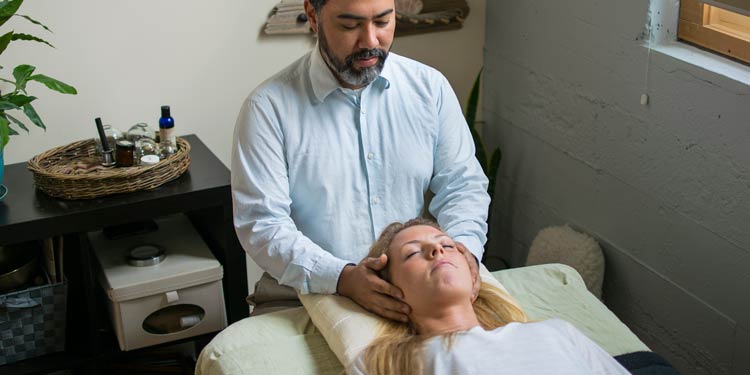
What does the sacred have to do with Chinese medicine? Can we approach our work, recognizing in it an expression of nature’s principles at work, and in that sense, sacred? Can we act as if the hand of the sacred is in fact in all things? Thich Nhat Hanh speaks of walking in such a way that each time our foot touches the earth it is done in the spirit of a blessing. Can we touch our patients with that same spirit, recognizing the sacredness of the human body? In Christianity we are told humans are made in the “image and likeness of God,” but that seems more something that is easily said than one that truly influences how we do our healing work. Do we see our patients that way? But it seems to me this is a possible goal and direction for our work in AOM.
“…Things are going to slide, slide in all directions. Won’t be nothing. Nothing you can’t measure anymore. The blizzard, the blizzard of the world has crossed the threshold. And it has overturned the order of the soul…” Leonard Cohen, The Future.
I am stepping out on thin ice in tackling this topic of the sacred, but I think these days it is demanded of us to consider this subject traditionally relegated exclusively to religious communities. Gregory Bateson’s definition of the sacred: That with which thou shalt not mess. That clearly removes sacredness from the sole ownership of the religions. A dyed in the wool scientist should be able to relate to that. Surely some things are off limits.
As I write, the yearly Shan Ren Dao retreat is taking place outside Portland, OR where I live. Shan Ren Dao translates as The Path of the Virtuous Human. Years ago I was one of the retreatants, and it was a transformational experience, a key inflection point in my life. In this mostly silent retreat an emotional healing system that developed over 100 years ago in China close to the Russian border is taught. It is based in the five Confucian virtues, one for each of the five elements. These are a bit different from the “normal” 5E associations we learn in TCM colleges.
The virtue of fire is the trickiest one of the five to describe. Heiner Fruehauf, PhD, captured it best in one conversation when he explained that fire’s virtue was the ability to see the hand of the sacred in all things. I think we can tie that back to Bateson fairly directly. Frankly the divide between the sacred and the mundane was always an artificial one; it is all sacred. There are no ordinary moments. How does it change our encounters with our patients when we recognize this?
Patients in China who go to a Shan Ren Dao practitioner do not receive herbs or acupuncture, although they might do that separately. In this system of healing they might instead listen to wisdom stories and reflect on their lives. In the retreat we essentially did a two-week long emotional autobiography. It was so valuable that it is hard to express. There are many cases in China of this approach provoking violent cleansing crises, followed by deep healing, even in cases of serious illness, such as cancer. The role of the emotions in health of course was recognized in China a long time ago. It is in fact perhaps the most important factor of all. In this Shan Ren Dao system, though, the emotions become the sole focus.
It should be clear to even the most casual observer that we are close to polluting ourselves right off the face of the earth. Our water and air are fouled over the entire globe, our society is torn apart with factionalism, our food is compromised with chemical additives and grown with poisons that persist in the environment, wars are raging around the world, and we could go on. Clearly, as a global group, humans do not see nature as sacred—in fact, it seems to be seen as simply a source of resources for our industrial machine. Collectively we seem to lack the awareness of anything at all being truly sacred. We are messing with many aspects of nature where we would have better refrained.
And our medical system mimics in many respects our industrial system. How many patients have I heard complain that their doctor never even looked up from his/her computer in the eight minutes they had together? They were treated as a repository of lab values that needed to be manipulated with drug therapy of one sort or another. In all of this rush to move people through the medical system quickly and putting a number on everything, where is the sacredness of the human spirit, of the possible relationship with the healer-doctor?
Implied in all this of course is a massive sea shift in our own lives. Our busy self cannot pull off what we discuss here. We would need to change. But I think many of us were drawn to East Asian medicine, at least in part, because we wished for a real change in our lives. This is it—recognize that all of nature is sacred—the question is whether we will embrace it.
—Bob Quinn, DAOM, LAC